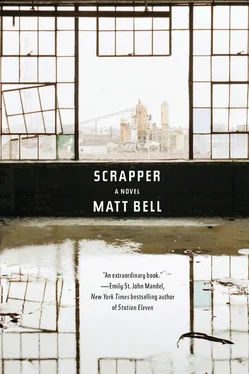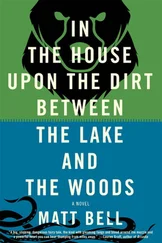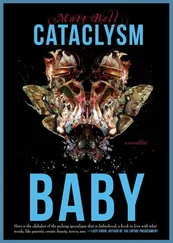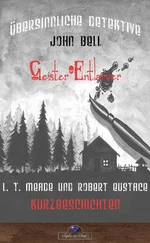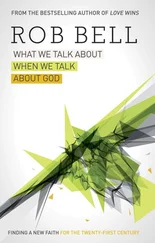Against all those who would make us afraid
And now the answer batters the sky:
with fire there is smoke, and after, ashes.
You can howl your name into the wind
and it will blow it into dust, you
can pledge your single life, the earth
will eat it all, the way you eat
an apple, meat, skin, core, seeds.
— Philip Levine, “Ashes”
And God shall say God did it.
— Inscription inside St. Agnes Church, Detroit, Michigan
SEE THE BODY OF THE plant, one hundred years of patriots’ history, fifty years an American wreck. The remainder of a city within the city, a fortress of squared buildings a mile long and five blocks wide. Three million square feet of interior. A century of reinforced concrete and red brick and steel crossbeams still standing despite injury, of parking lots stretched around miles of emptiness, their lights long ago darkened, their torn and opened fences made an invitation to the gutting.
See the factory roads left open to an incurious public, see the once-famous sign stuttering in broken glass across the bridge between buildings, hung high over the dregs of opposing traffic. And in each last windowpane see a letter, together reading mo_or city in_u_tr__l park.
See how names were not just markers but promises. See how the first name the sign had cried had been gone even longer. How in the city the advance of history displaced what it could not destroy, erase, unfinish: an American exclusion zone. There were sights here few strangers would see again. Except in the photographs of urban explorers. Destruction porn. Except through the window of a bulldozer. Destruction.
See the unsteady structures of the plant’s surface, their danger multiplying with every floor climbed above the street, every movement there a possible cascade of effect, complicating last solutions against gravity and entropy. Find the limits of bravery at the threshold of ground and underground, entrances inside the plant where if you knew where to crawl you could get beneath the piled rubble to gaze into basements, cellars, long-locked storage buried beneath factory floors, miles of tunnels for insulated electrical wire and telephone cable, copper pipes for water and steam.
Everywhere you look, everywhere see the barely imaginable past. Imagine anyway. Rewindow the walls. Patch the roof with period-appropriate tar and shingle. Whatever you make simply a confabulation, an illusion of history.
See the high discard of the room where the engines had been tested prior to installation. See the one hundred tables once arrayed here, and on every table see an engine mounted, flush with leaded gasoline and oil, running hot, each machine designed for the same task. See the engineers moving table to table in their dirty suits, grease staining their cuffs, the first generation to work under electric lights, born into the gap before the calculator, the computer, robotics. Before this room they used to test an engine by driving it until it failed. Every machine was a marvel but you could push anything until it broke.
See the room where seamstresses wove plush interiors, stitched and fitted without a sewing machine, using only human hands, human skills. A luxury made of ten thousand stitches. See the parts warehouse, four stories tall and a block long, where the company kept a spare part for every fallible inch of every model they’d made, in 1910 or 1913 or 1925, other good years. All those parts a catalog of promise. If it was broken it could be fixed. They had the parts, they had the expertise, they believed they had the will to keep their cars on the road forever.
See the newer workshops raised between existing buildings to maximize the space. As if every inch of earth were necessary to contain this industry. See the long rooms built for the first modern assembly lines, and when the war came remember how the company volunteered for the high commerce of patriotism. Then the peacetime arrival of the freeways, the newer machines the new roads demanded destined to be designed by other companies, made to devour those newest miles, carrying their drivers fast from coast to asphalt coast.
See the assembly lines at max capacity for the last time, run on this singular idea, the century’s founding innovation: one man assigned one function, the fundamental principle of mass production. The promise of a car for every man and the roads to drive it on. Each man a unit of work here in the fastest-growing city in America, amid the explosion of neighborhoods, schools, theaters. Nearly two million citizens in 1950 but then fewer in every year after.
See the half-life of every man and machine and place. See the plant closing. See the halfhearted inhabitations, the long vacancy that followed, the future lack. The slow crumble to here. Time passing, allowing failures of reinvention, squatters and thieves, until everything valuable had been carried away, leaving behind only concrete and brick and wood, the last looted structures waiting for the blow.
See the steel beams holding but the roof fallen in, wide banners of tar paper hanging between the beams, their black tarps flagging in the wind. Watch the walls for signs of life. See the word sky written in sky-blue spray paint, in a pretty cursive long untaught. Painted names photographed but uncounted, curses everywhere, in modes both artful and artless. The new pride in slurs, their late variants. See cartoon eyes staring, an orgy of distended genitalia, cars and crowns, pitchforks and skulls. Context is king but what if the context were demolished. Every facade a surface flattened, readied for the image and the word, a conversation coming down: bad tempr written in consistent font, leveled stenciling. struggle buggy across the fluorescent glow of a starlet’s eyes, the perforation of her mouth. A pasted optometrist, a gloved hand. sleep written in bubbled lettering and below it the same word in a simpler script, a subtitle or a translation. greedy little bastard scrawled in white paint below a stairwell, the phrase young wild and free arced so high its writer must have had nothing left he was afraid to lose.
Read the walls, and hear on the wind the other names of the dead: Welch, Rainier, Elmore, and Marquette, all extinct. Scripps-Booth, Viking, LaSalle, extinct. Sunbeam, Humber, Singer, extinct. The ancient unremembered, the more recent dead: Imperial, Valiant, Eagle, extinct. Edsel, Merkur, Oldsmobile, Geo, every one of them extinct or nearly so.
Saturn, Mercury — they named a car after a god, but only after they killed the god.
Hear the name Packard, whispered closest to where you stand.
Now see an early dusk beginning, its reddening glare recasting the plant’s brick and rust in deeper reds, brighter orange. See across the golden glare a distant plume lifting from one far corner of the plant. The plume nothing but dust, loosed from the buildings and the dirt.
See the plume lit too as it finds its upper limit. See its heights starting to collapse even as new billowing supports its base.
See the dust and the dust’s cause: scrappers somewhere in the black avenues of the plant, taking their own last chance.
See history rising by their hand, the dust of a century cast into the air, mote by uncountable mote, becoming a dark tower twisting from the ruin.
See each particle a part of a whole disturbed, see the exponential increase of surface area wherever an object was broken down, the way a thing split might ignite faster than its inert whole. All the broken mess of steel and wood and brick rising, each particle alighting, each floating particle eventually coming to touch another, each touch a whisper of contact.
Читать дальше
